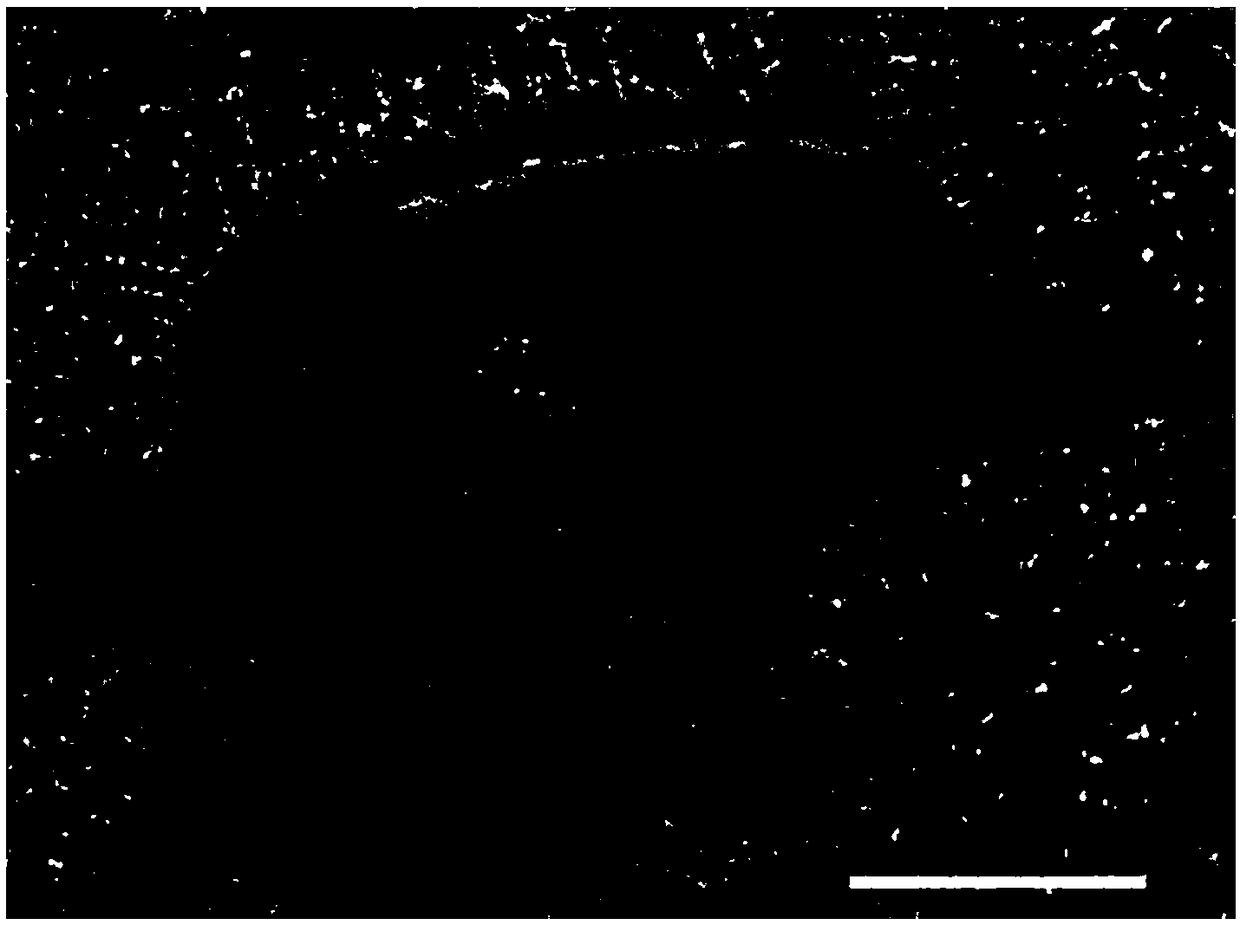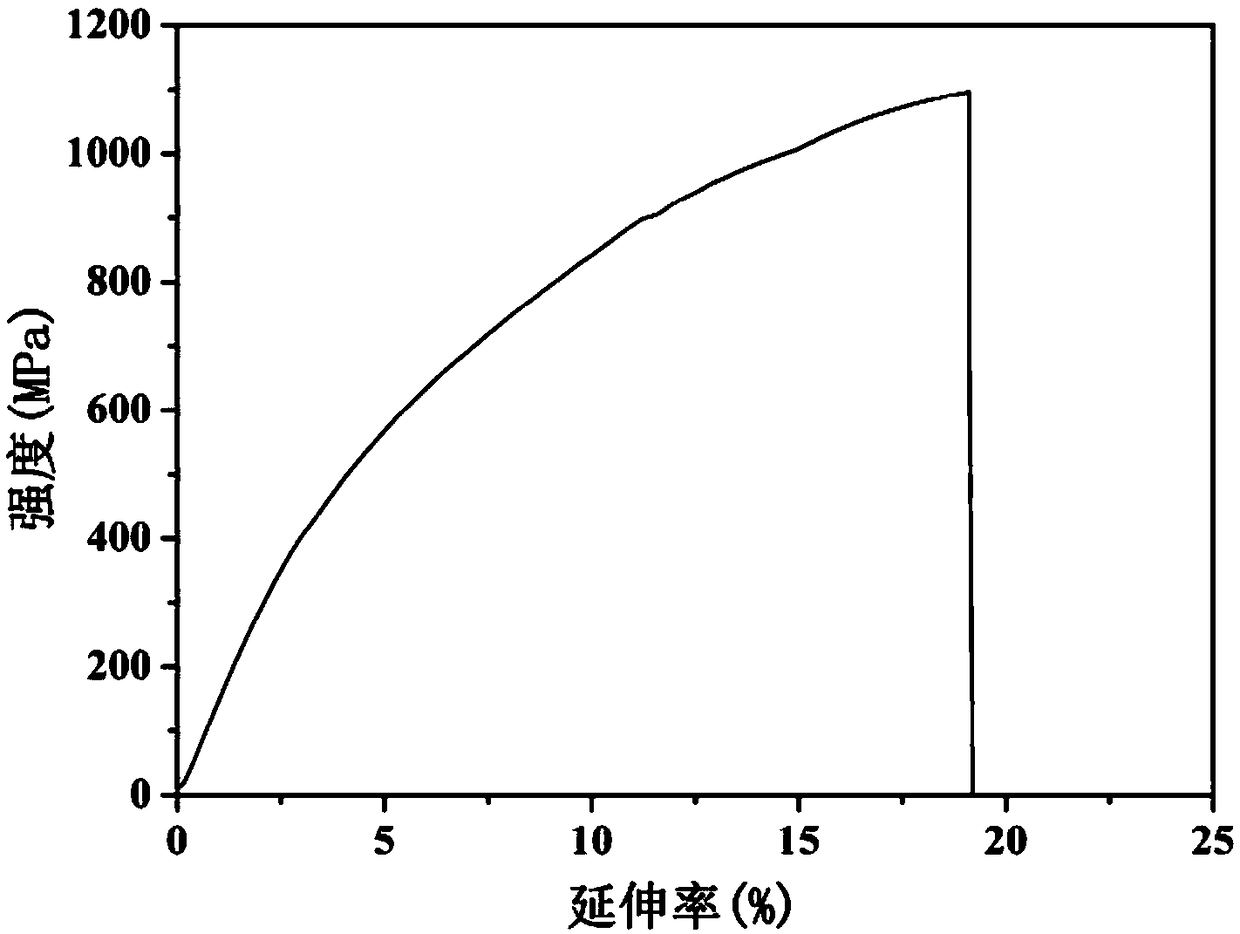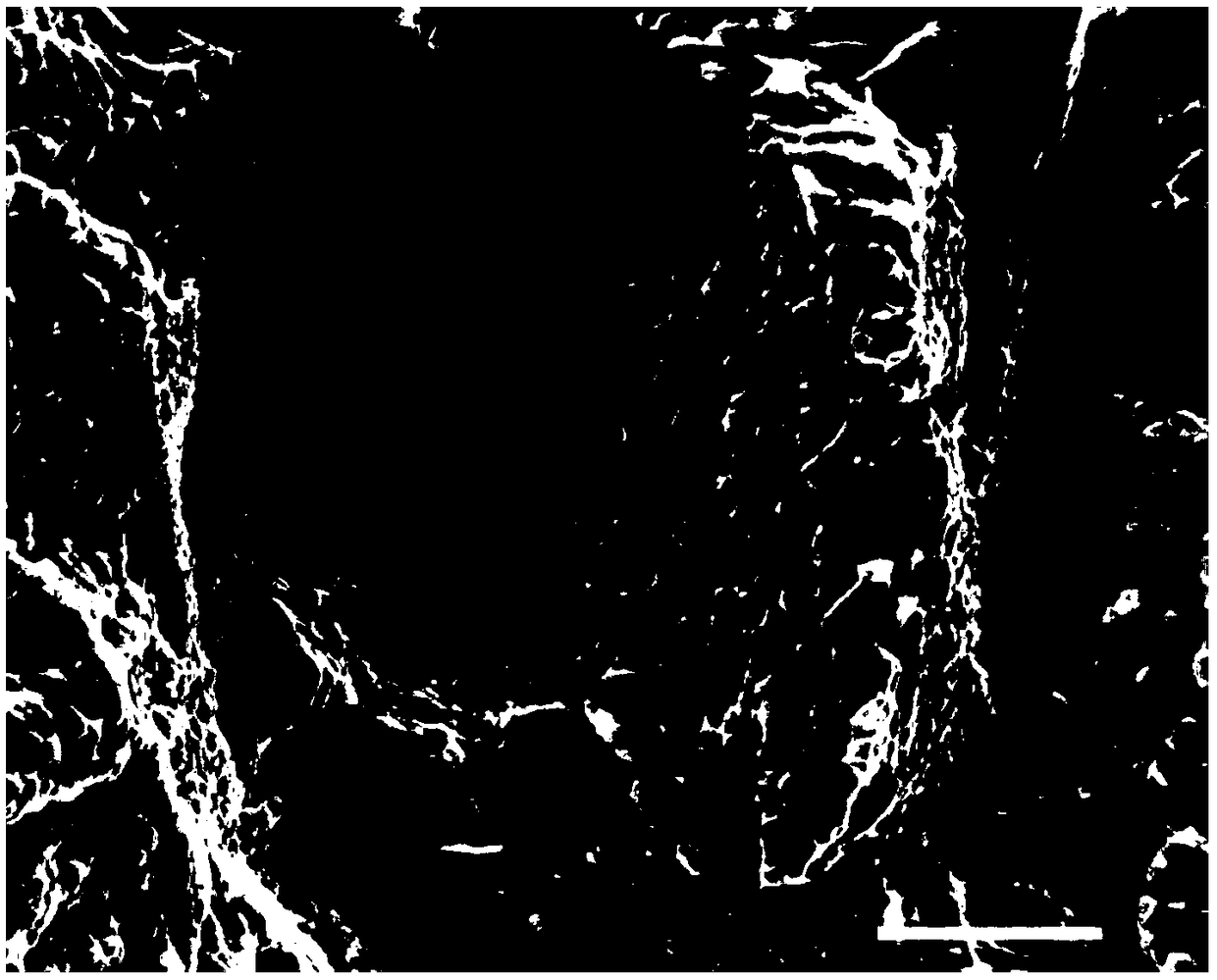3D-printing in-situ rare earth doped titanium matrix composite material activated bone implant and forming method
A titanium-based composite material and 3D printing technology, applied in the direction of prosthesis, additive processing, additive manufacturing, etc., to achieve the effects of short production cycle, refined solidification structure, and enhanced comprehensive service performance
- Summary
- Abstract
- Description
- Claims
- Application Information
AI Technical Summary
Problems solved by technology
Method used
Image
Examples
Embodiment 1
[0032] (1) B with a mass ratio of 1:2 2 o 3 The powder and the rare earth Nd powder are ball milled and mixed with a high-energy ball milling process at a speed of 250rpm under the protection of argon to obtain metallurgically bonded B 2 o 3 / Nd mixed powder;
[0033] (2) Weigh B with a mass ratio of 5:1:20 2 o 3 / Nd mixed powder, hydroxyapatite powder, spherical pure Ti powder for 3D printing, using argon-assisted protection and a ballless wet low-energy ball milling process with a speed of 50rpm to obtain titanium alloy composite powder with good fluidity;
[0034] (3) Under the protection of high-purity argon gas, using laser 3D printing technology, set the partition size to 1×1mm 2 , with a stacking fault increment of 30°, using a laser energy density of 250J / m to form a 3D printed in-situ rare earth in-situ doped reinforced titanium-based composite active bone implant.
[0035] figure 1 It is the microstructure topography figure of the 3D printing in-situ rare eart...
Embodiment 2
[0037] Referring to the forming method of Example 1, the 3D printed in-situ rare earth in-situ doping-reinforced titanium-based composite material active bone implant is different in that: the speed of high-energy ball milling in step (1) of this embodiment is adjusted to 300rpm; step (2) ) in the ballless wet low energy speed is set to 100rpm, the B 2 o 3 The mass ratio of / Nd mixed powder, hydroxyapatite powder, and spherical pure Ti powder for 3D printing is set to 3:1:25; the size of the laser scanning partition in step (3) is adjusted to 4×4mm 2 , adjust the laser energy density to 300J / m.
[0038] figure 2 The room temperature tensile strength diagram of the 3D printed in-situ rare earth-doped titanium-based composite active bone implant obtained in Example 2 shows that the strength of the rare-earth in-situ doped titanium-based composite active bone implant is as high as 1102.50 MPa, the elongation can reach 19.04%, indicating that its strength and plasticity have b...
Embodiment 3
[0040] Referring to the forming method of Example 2, the 3D printed in-situ rare earth in-situ doping-reinforced titanium-based composite active bone implant is different in that: in step (1) of this example, the rare earth element is selected as Ce, and the B 2 o 3 The mass ratio of powder and rare earth Ce powder is adjusted to 1:3, and the high-energy ball milling speed is adjusted to 400rpm; Titanium alloy is set as Ti-Ni alloy in step (2); the laser scanning partition size is adjusted in step (3) 5×5mm 2 , and the stacking fault increment is 35°.
[0041] image 3 The fracture morphology of the 3D printed in-situ rare earth-doped titanium-based composite material active bone implant prepared in Example 3 shows that the tensile fracture morphology is dimple-like, indicating that the in-situ rare earth oxide and TiB The ceramic phase significantly improves the mechanical properties of hydroxyapatite / titanium alloy composites.
PUM
| Property | Measurement | Unit |
|---|---|---|
| particle diameter | aaaaa | aaaaa |
| strength | aaaaa | aaaaa |
| elongation | aaaaa | aaaaa |
Abstract
Description
Claims
Application Information
 Login to View More
Login to View More - R&D
- Intellectual Property
- Life Sciences
- Materials
- Tech Scout
- Unparalleled Data Quality
- Higher Quality Content
- 60% Fewer Hallucinations
Browse by: Latest US Patents, China's latest patents, Technical Efficacy Thesaurus, Application Domain, Technology Topic, Popular Technical Reports.
© 2025 PatSnap. All rights reserved.Legal|Privacy policy|Modern Slavery Act Transparency Statement|Sitemap|About US| Contact US: help@patsnap.com



